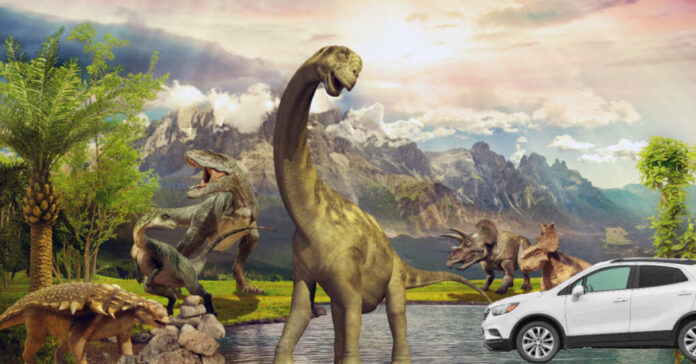
Every school kid learned the facts about the great dinosaur extinction. Around 66 million years ago, a giant asteroid struck the earth and annihilated dinosaurs from the prehistoric planet. The K-PG event, otherwise known as the Chicxulub Impact, ushered in a new era that saw the end of the dinosaurs and the rise of mammals.
But a recent study published in the journal Science Advances suggests that climate change, not a giant asteroid, could have been a significant factor in the mass extinction.
The study’s authors reveal data indicating that volcanic sulfur degassing might have led to recurrent, brief global temperature drops. This environmental stress could have affected ecosystems long before the asteroid devastated the planet during the Cretaceous period.
The research, co-authored by McGill University Professor Don Baker, indicates that climatic conditions were likely unstable, with recurrent volcanic winters lasting decades. The instability would have made survival challenging for both plants and animals.
The researchers analyzed the Deccan Traps in western India, which originated from molten lava during extensive volcanic eruptions 66 million years ago. Their objective was to understand the quantities of fluorine and sulfur released into the atmosphere as these volcanoes expelled one million cubic meters of rock.
To prove their theory, researchers studied the fluorine ejected by volcanic eruptions, finding that they ranged from 400 to 3000 parts per million. While this is sufficient to impact the regional environment significantly, it is not enough to affect the entire planet. In contrast, the emitted sulfur, peaking at up to 1800 parts per million, could impact the globe. This devastation occurred shortly before the K-Pg event, about 0.1 million years before the impact.
Scientists have long recognized the significant influence of volcanic activity on our climate. Some researchers hypothesize that the “Little Ice Age,” a significant cooling period during the Medieval era, might have been triggered by a series of substantial volcanic eruptions.
Dr. Yves Moussallam, Assistant Professor of Earth and Environmental Sciences and Geochemistry at Columbia Climate School, explained that past volcanic eruptions have had a cooling effect on the climate. He mentioned instances of global cooling following the eruptions of Tambora in 1815 and Mt. Pinatubo in 1991.
This cooling effect is attributed to sulfur dioxide emitted by volcanoes, which transforms into sulfuric acid in the atmosphere. This can last for months to years, reflecting a portion of the sun’s radiation and contributing to a net cooling effect on the Earth’s surface.
Dr. Michael E. Mann, a University of Pennsylvania professor of earth and environmental science and author of “Our Fragile Moment,” explores how the history of life on Earth is intricately linked to the changes occurring in its climate. His book emphasizes that throughout Earth’s 4-billion-year history, the interplay between life and climate has been crucial.
This relationship extends beyond volcanic eruptions, encompassing significant events such as Snowball Earth when most of the planet’s surface was frozen.
“Then we zoom ahead to just a few million years ago, and primates are on the scene. At every step, you have climate change impacting life,” Mann explains.
Who would have guessed that cyclical climate change could impact the Earth, even without humans using plastic bags?
Certainly not climate change enthusiasts, who hastily explain that natural climate change is distinct from the current “anthropogenic” climate change driven by human activities like burning fossil fuels.
Moussallam highlights the carbon dioxide (CO2) emissions disparity between human activities and volcanic eruptions. He explains that burning fossil fuels and cement manufacturing releases about 37 billion tons of CO2 annually. In comparison, volcanoes contribute approximately 0.28–0.36 billion tons of CO2 annually to the atmosphere and oceans. He explains that volcanic activity contributes about 100 times less CO2 than human-induced activities.
And that’s before gassy cows are factored into the equation.
But if further research supports the study’s conclusion, it will entirely reshape the current understanding of Earth’s ancient history. Instead of viewing the K-Pg extinction event as caused by a massive object colliding with the planet, science must acknowledge a sequence of events where the volcanic eruptions caused significant climate and environmental changes.
While dinosaurs lacked gas-guzzling cars and aerosol cans, it seems Mother Nature still unleashed a devastating climate change and wiped them out. Luckily, the Biden administration can thwart her with taxation, fines, electric vehicles, and LED lightbulbs.















